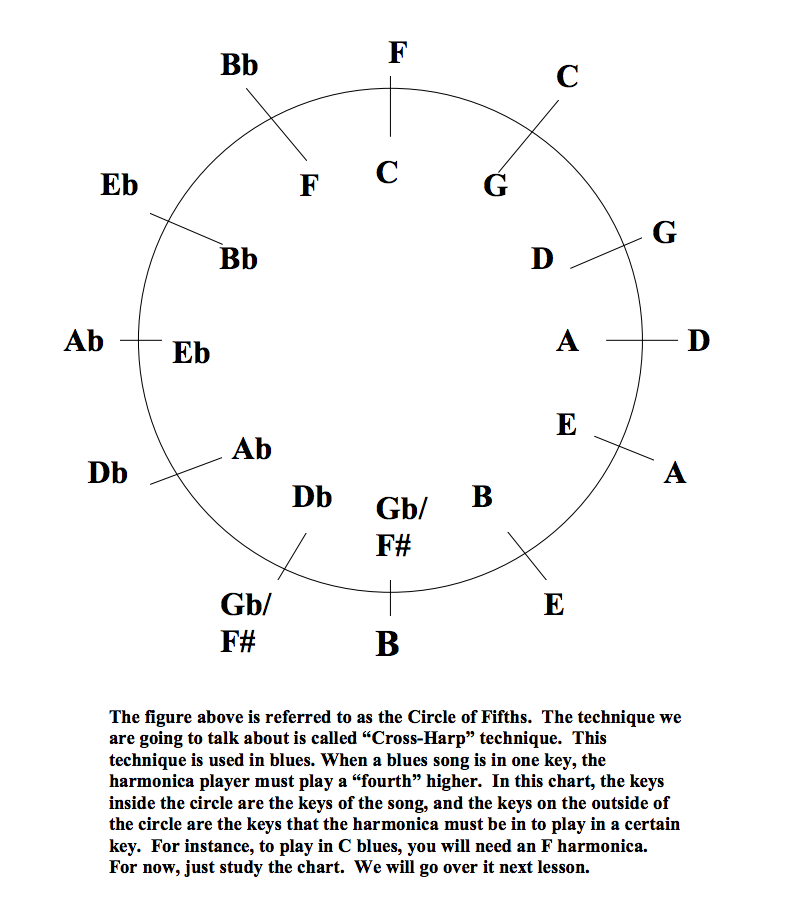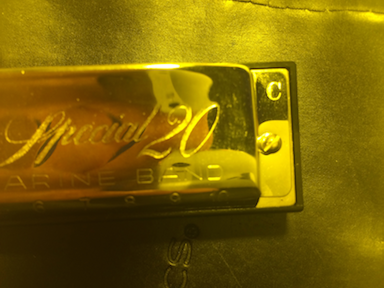~ harmonica ~ ~ exploring the blues Americana of crossharp ~ 'energize your own learning in life through education, exploration and discovery ...' |
In a nutshell. What follows here is just the pure tuning theory from a friend Cooper 'CB' White, who plays all sorts of nice melodies on the harmonica; diatonic lines of major scale notes, blues licks bent into diatonic lines, blues honks, vamps and such, and all manner of sequences and permutations of all of the above. In creating this chart, White outlines how harmonicas of various tunings can gather 'round with the equal temper system' instruments (guitars, pianos, horns etc.), to match up key centers and immediately begin making consonant sounding musics together. So, we still have to 'find it' ( music / pitches ) by ear but knowing it by the theory too, how the notes we want to sound are positioned within a key center, just makes for a solid educational beginning point, a perspective of art to forever build upon. Then we each just have to shed to figure out how to sound the music of our imaginations on a harp. Here's White's key center / tuning relationship chart for 'crossharp.' Example 1. |
|
What's crossharp. 'Crossharp' is a way to physically match up a harp's key with the pitches of a mode that is also built into those pitches. So just like with a guitar / piano / horn scale shape, if we play the notes from beginning to end, we get a definite aural color. Knowing it's a loop of pitches, we can start on any one of the notes in the shape and create its own unique modes; the other scales / interval formulas within a chosen scale. The 'modes' are historically from the old system of pitch organization we had before the 1600's or so and goes all the way back in recorded history to the Greeks, when our pitches were tuned to create just the pure melodies more according to Mother Nature's way of tuning. No real chords back then as we enjoy today. And that's where this 'crossharp' gets us with our Americana musics', crossharp creates a non-diatonic mode in relation to our chosen key center. |
|
Crossharp theory. In theory, 'Crossharp' is the way we trick a harp built in one key to play all manner of 'Americana musical coolness' and sounding great ... while the band plays in a different key ... shhh :) We 'cross' a 'C' harp into the key of 'G.' A 'harp in C' usually looks like this. Example 2.
Knowing its pitches are physically located in the same places on an instrument built in any key. We grab a 'C' harp to play crossharp on an Americana song in the key of 'G' major, and just forget to tell the harp that we're not playing in 'C.' :) For 'two draw' on a 'C' harp give us our cross root pitch 'G.' 'Two draw on an 'A' harp give us an 'E', the root pitch of the key we're crossing to. |
|
Bending notes on a harmonica. According to those in the know, when we bend a note on a harp the pitch goes ... down. Crazy huh ? But that's the case so it seems. Not being a 'harpist' meself, not all that sure of the physical mechanics of all this. Thus; 'two draw with a bend' gives us the 'flat 7' essential blue note. For many artists, this lick / technique / pitch is a pillar of blues harp. Thus; 'three draw with a bend' gives us the 'flat 3' / the minor third of the key of the song. In our equal temper tuning system both of our 3rd's are a bit wonky. The major 3rd is plain sharp, by six cents or so. The minor 3rd is flat by a few cents, so needs a push up a wee bit. Find your sweet spots by ear. Knowing that rubbing major and minor 3rds together brings the essence of Americana blues, there's a hundred licks from 100 different cats, on all instuments, that bring this often 'hair raising' color. Thus; 'four draw with a bend' gives us the '# 4 / b5 / tritone' of the key of the song. Know as the 'diablo de musica' from the olden days, this is one powerful note that helps make the blues the blues. And there's a 'two pitch tritone' we use for making V7 / dominant chords. So ... very very handy to say the least. |
Review. So with this in mind and thinking U want to play some blues harp, master the root note of 'two draw' and find a way to bend it down to 'flat 7.' Same for the 'three and four draw with bends.' Just ask around, seek a ye hall find yes ? These pitches should be enough to get ya started, master them and start sitting in, jamm with records or the radio. |
"Blues is the roots. Everything else is the fruit." |
'energize your own learning in life through education, exploration and discovery ...' comments or questions ...? |

